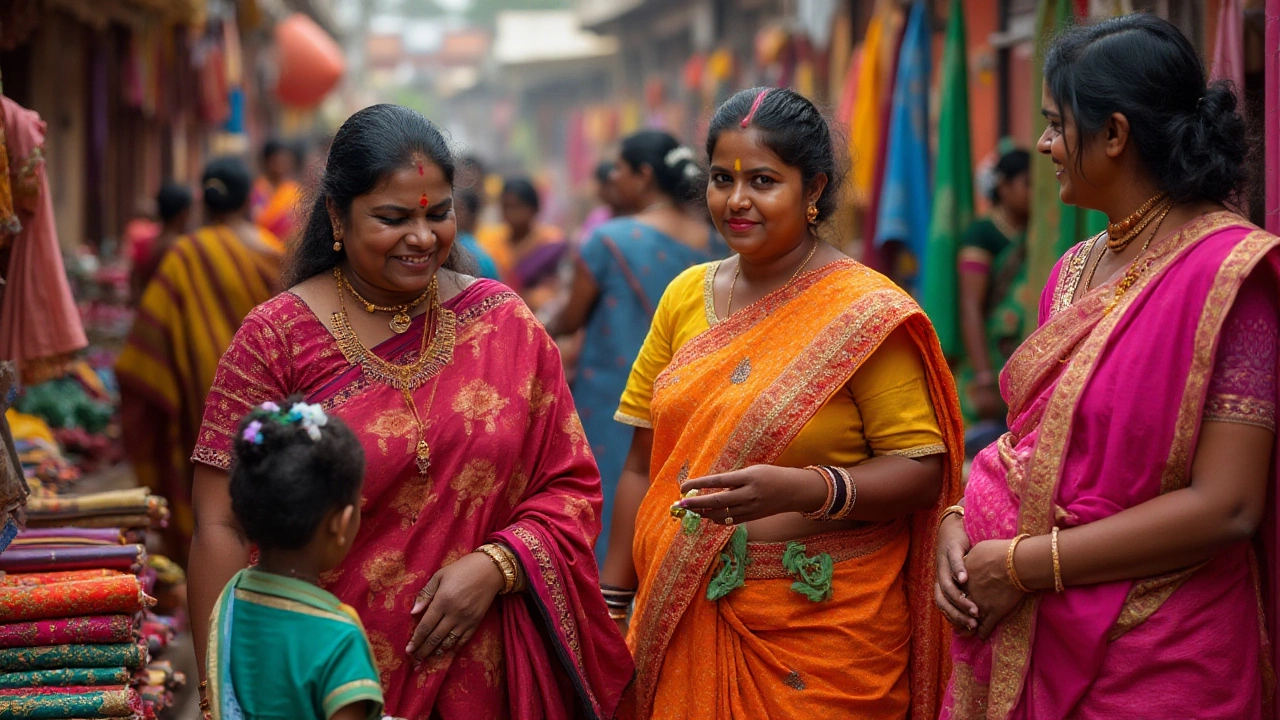Tamil Nadu Dress Code: Traditional Attire, Modern Trends, and Cultural Rules
When you think of Tamil Nadu dress code, the unwritten rules and deep-rooted traditions that guide how people dress across Tamil Nadu, shaped by religion, climate, and social identity. Also known as Tamil clothing customs, it’s not just about fabric—it’s about respect, identity, and belonging. This isn’t a rigid lawbook. It’s a living pattern you see every morning: women in bright silk sarees walking to temple, men in crisp white dhotis heading to work, students in simple cottons, and elders in handwoven kasavu. The Tamil Nadu dress code doesn’t demand uniformity—it honors context.
At the heart of this system are two key garments: the saree, a six-yard draped garment worn by women across Tamil Nadu, often made of silk for festivals and cotton for daily wear, with regional styles like Kanchipuram and Madurai, and the dhoti, a wrapped lower garment for men, tied in different styles depending on age, region, and occasion—from the loose mundu in rural villages to the pleated veshti worn in temples and formal events. These aren’t costumes. They’re tools of daily life, designed for heat, movement, and ritual. A woman in a Kanchipuram silk saree isn’t just dressed up—she’s honoring her grandmother’s craft. A man in a white dhoti isn’t being old-fashioned—he’s following a temple protocol that’s been unchanged for centuries.
There’s also the layer of unspoken rules: no shorts in temples, no revealing tops at weddings, no flip-flops during pujas. These aren’t about control—they’re about space. In Tamil Nadu, clothes mark where you are and who you’re with. At a village festival, you’ll see women in bright cottons with gold borders, men in simple dhotis with shoulder cloths, and children in matching sets. In Chennai offices, you’ll see sarees with modern blouses and dhotis paired with shirts. The tradition adapts, but the meaning stays. Even in cities, people choose fabrics and styles that whisper their roots. A woman might wear a cotton saree to work but switch to silk for her sister’s wedding. A man might wear trousers Monday to Friday, but never miss a dhoti on Sundays at the temple.
And then there’s the deeper layer—folk attire. The Karakattam, a traditional dance from Tamil Nadu where performers balance pots on their heads, often wearing colorful, layered sarees with heavy jewelry, isn’t just performance—it’s wearable heritage. The Puliyattam, a folk dance where men dress as tigers using yellow and black paint and woven masks, shows how clothing becomes transformation. These aren’t costumes you buy. They’re made by hand, passed down, and worn with pride because they carry stories.
What you won’t see? Uniformity. What you will see? Choice within boundaries. The Tamil Nadu dress code isn’t about looking the same. It’s about knowing when to be bold, when to be quiet, when to honor the past and when to move forward. You’ll find teenagers in jeans at the mall, but still wearing a traditional gold chain for their birthday. You’ll see grandmothers in cotton sarees with no makeup, yet their earrings are family heirlooms. This isn’t fashion. It’s continuity.
Below, you’ll find real stories from people who live this code—not just what they wear, but why they wear it. From temple rituals to wedding days, from village fairs to city streets, these articles show the quiet power of cloth in Tamil life.
